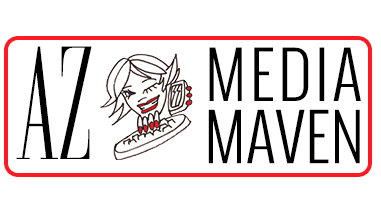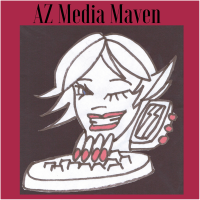When it comes to websites and social media, most people focus on the big stuff – eye-catching graphics, slick headlines, and punchy captions. But behind the scenes, it’s often the small, overlooked details that make the biggest difference. One of those? Naming your image files properly and using alt text correctly.
At AZ Media Maven, we help businesses of all sizes fine-tune the details that boost both visibility and accessibility. Whether you’re updating your website or posting to Instagram, here’s why your photo names and alt text deserve more attention.
What’s in a file name?
Let’s start with how you name your images before uploading them to your website or social feed. A file named IMG_2839.jpg tells search engines nothing. But a file named peoria-arizona-family-pizza-night.jpg? That gives them something to work with.
When you use descriptive, keyword-rich file names, you’re helping platforms like Google understand what your content is about. This can improve how your images show up in search results and also give your overall SEO a small but meaningful boost.
For example, a photo of your storefront could be named char-pizzeria-peoria-front.jpg instead of photo1.jpg. Simple tweaks like this tell both users and algorithms what they’re looking at.
Why alt text matters (and it’s not just for SEO)
Alt text, short for “alternative text”, is the written description that appears in your website code to explain what an image shows. It serves two big purposes:
- Accessibility
For users who are blind or visually impaired, screen readers rely on alt text to describe images. Without it, those users miss out entirely on the visual part of your content. Writing thoughtful alt text helps make your site more inclusive and easier to navigate for everyone. - SEO value
Search engines can’t see your images, but they can read the alt text. Including keywords naturally in your descriptions can support your on-page SEO and help your content appear in image search results.
Keep in mind that alt text should describe the image in plain language. For instance:
- Bad: image of logo
- Better: AZ Media Maven logo in teal and coral with tagline below
Social media and alt text
Most people don’t realize that platforms like Instagram, Facebook, LinkedIn, and Twitter all allow you to add alt text to images. It’s often hidden behind an “edit alt text” button when you upload a post.
Adding alt text on social media:
- Improves accessibility for screen readers
- Enhances discoverability when paired with captions and hashtags
- Makes your content more thoughtful and inclusive
We recommend keeping your alt text clear and conversational. If you’re posting a product photo, for example, describe the item and the setting. Think of what someone might want or need to know if they couldn’t see the image.
How to write better alt text and file names
- Be descriptive but don’t overdo it. Aim for one sentence.
- Use keywords naturally but don’t stuff them in.
- Avoid phrases like “image of” or “picture of”. Screen readers already know it’s an image.
- Stay consistent in your file naming and alt text practices across your site or brand.
The little things matter…
It may seem like a small thing, but how you name and describe your images can make a big impact. From better search engine visibility to improved accessibility, these behind-the-scenes details help shape how people find and experience your content.
At AZ Media Maven, we believe good marketing is all about connection – and that includes making sure everyone can access and understand what you share. Explore more of our digital strategy tips here or reach out to chat about how we can support your brand.
AZ Media Maven is based in Laveen, AZ, a suburban village in the greater Phoenix area. Owner Rose Tring has more than 30 years of journalism experience as an editor and writer, many of those years in business news. She created AZ Media Maven in 2012 to help other business owners succeed by effectively telling their stories through public relations and social media. Reach AZ Media Maven at azmediamaven@azmediamaven.com or call (602) 373-8371.











Great reminder that the smallest details like descriptive image filenames and thoughtful alt text can make a meaningful difference in both SEO and accessibility. It’s often the behind-the-scenes work that builds stronger, more inclusive connections with audiences. For small businesses eager to implement these best practices without a steep learning curve, platforms like Topiko offer simple, designer-ready tools for professional web and app setup—making it easier to optimize content effectively. Thanks for spotlighting these important digital fundamentals!